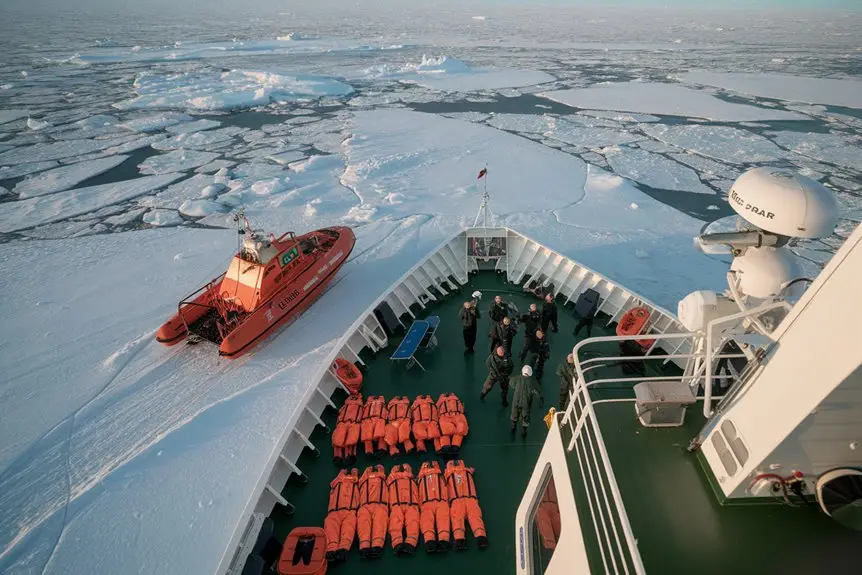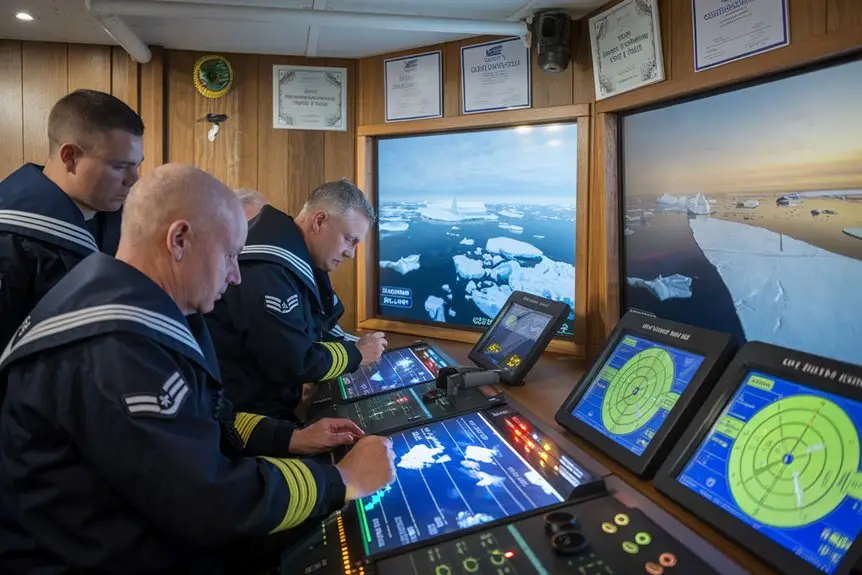Planning a polar cruise? You’ll need to follow specific rules set by the International Maritime Organisation‘s Polar Code.
Your cruise ship must:
- Have a valid Polar Ship Certificate : IMO Polar Code
- Meet safety standards for Arctic and Antarctic waters
- Carry properly trained crew with Certificates of Proficiency
- Follow environmental rules for waste and wildlife protection
Your passenger experience will include these limits:
- Maximum 200 people in protected areas
- Specific landing restrictions at designated sites
You can learn more detailed requirements from your cruise operator before your polar voyage. Each requirement helps protect you and the pristine polar environments you’ll visit.
The rules ensure your safety whilst helping preserve these unique regions for future travellers.
🐧 Polar Cruise Enquiry 🐻❄️
Our team of polar travel specialists have personally explored both the Arctic and Antarctic regions – from tracking polar bears in Svalbard to kayaking with penguins off the Antarctic Peninsula. Let us find the right polar expedition cruise for you.
The Polar Code Explained

The Polar Code protects ships and the environment in Arctic and Antarctic waters. These regions present unique challenges that demand special rules and safety measures.
Cruise lines need to understand the Polar Code if they operate vessels in polar waters. Since 2017, this mandatory framework has set clear requirements for:
- Ship design and construction
- Crew qualifications and training
- Environmental protection measures
- Safety equipment requirements
Vessels must meet specific standards to receive a Polar Ship Certificate. This certificate defines where and when a ship can operate in polar regions. The code categorises ships based on their intended polar activities.
Ships must follow detailed guidelines for:
- Life-saving equipment
- Navigation systems
- Waste management
- Emergency procedures
- Environmental protection
The International Maritime Organisation (IMO) developed these rules to ensure your safety and protect polar environments.
Your compliance with the Polar Code helps safeguard these sensitive regions whilst enabling safe maritime operations.
Essential Safety Requirements

Safe polar navigation requires specific safety measures beyond regular maritime rules.
Crew must complete specialised polar training. This applies particularly to masters, chief mates and deck officers.
Keep all safety equipment and escape routes clear of ice and snow. The vessel needs partially enclosed lifeboats fitted with searchlights for dark conditions. Ships should provide thermal protection for everyone on board.
Practise emergency procedures through regular drills. Your ship must carry a Polar Water Operational Manual and meet key design requirements:
- Ice-capable navigation systems
- Cold-weather equipment
- Emergency gear suited to polar conditions
Check your vessel’s safety features match polar standards before setting off.
Environmental Protection Standards

Operating in polar waters requires clear environmental protection standards. Ships must prevent all oil, oily mixtures and harmful substances from entering the water.
When discharging sewage, a minimum distance of 12 nautical miles from any land, ice shelves or fixed ice formations is necessary.
Crew need specific training on environmental protection, and you must maintain accurate operation records.
Certification and Training Protocols

Operating a vessel in polar waters needs specific certifications and training. Ships must ensure Masters, Chief Mates and Officers hold valid Certificates of Proficiency under STCW Code standards.
Basic certification requires:
- Completion of an approved training course
- Meeting STCW Code requirements
Advanced certification requires:
- Basic certification completion
- Two months of management-level service in polar waters
Crew training responsibilities include:
- Familiarising all crew with PWOM procedures
- Training crew in survival equipment use
- Keeping safety equipment clear of snow and ice
- Maintaining ice-free escape routes and survival craft
- Teaching passengers emergency procedures
Landing and Passenger Limits

Landing and Passenger Limits
Ships need to follow specific limits when operating in Svalbard’s protected areas:
Passenger numbers:
- Maximum 200 passengers on a vessel in protected areas
- Maximum 100 people per shore landing for ships with over 500 passengers
Frequently Asked Questions
How Are Indigenous Communities Involved in Polar Cruise Tourism Decisions?
Indigenous communities play a growing role in Arctic tourism, though they currently receive just 15% of the revenue. You can see their involvement through three main areas:
- Cultural heritage consultations
- Local guide opportunities
- Decision-making about cruise ship landing sites
These communities help shape how you experience their traditional lands during polar cruises, whilst working to protect their cultural heritage and environment.
What Compensation Policies Exist for Itinerary Changes Due to Weather Conditions?
Weather-related itinerary changes don’t qualify for automatic compensation. You’ll receive refunds for any pre-booked port excursions you miss. Your cruise line might offer you onboard credits or future cruise discounts as a gesture of goodwill. If you have travel insurance, you can claim additional compensation for weather disruptions.
🐧 Polar Cruise Enquiry 🐻❄️
Our team of polar travel specialists have personally explored both the Arctic and Antarctic regions – from tracking polar bears in Svalbard to kayaking with penguins off the Antarctic Peninsula. Let us find the right polar expedition cruise for you.
